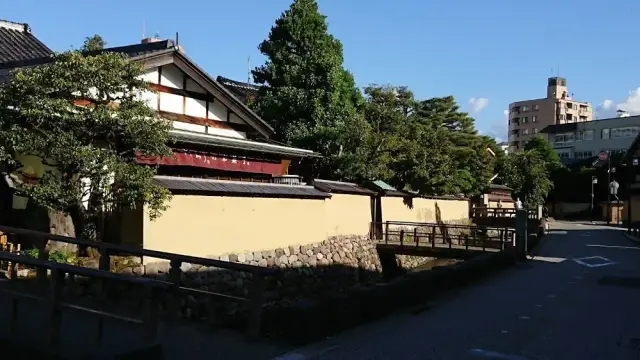https://www.dekitabi.com/itinerary/kanazawa-essential-tour
Nestled on the west coast of Japan, Kanazawa offers an unparalleled experience for travelers seeking to immerse themselves in Japanese culture and history. From the grandeur of Kanazawa Castle Park to the serene beauty of Kenrokuen Garden, and the historical significance of Ishikawa Shrine, Oyama Shrine, and the Nagamachi Samurai Residence Ruins, this city is a treasure trove of cultural and historical landmarks. Here’s a comprehensive guide to these must-visit sites in Kanazawa.
1. Kanazawa Castle Park

https://www.dekitabi.com/attraction/kanazawa-castle-park
Kanazawa Castle Park stands as a testament to the rich history of the Kanazawa Domain. Originally constructed in the late 16th century, the castle has undergone several reconstructions and renovations, resulting in a striking blend of traditional architecture and modern preservation techniques.
Key Highlights:
- Main Building (Honkaku): The current structure is a replica of the original, meticulously reconstructed to reflect the Edo-period design. Its imposing yet elegant appearance is a reflection of the power and influence of the Maeda clan, the rulers of the Kanazawa Domain.
- Gyokusen-en Garden: This traditional Japanese garden within the park offers a peaceful retreat with its meticulously maintained landscapes, koi ponds, and seasonal flowers. It’s an ideal spot for a leisurely stroll or a quiet moment of reflection.
- Museum Exhibits: The castle park houses several museums showcasing artifacts from the samurai era, including armor, weapons, and historical documents. These exhibits provide a deeper understanding of the castle’s historical significance and the lives of its former inhabitants.
2. Kenrokuen Garden

https://www.dekitabi.com/attraction/kenrokuen-garden
Considered one of Japan’s three most beautiful gardens, Kenrokuen Garden is a masterpiece of landscape design and horticulture. Spanning over 11.4 hectares, this sprawling garden is renowned for its seasonal beauty and meticulous design.
Key Highlights:
- Six Qualities (Kenroku): The garden’s name, Kenrokuen, translates to “Garden of the Six Qualities,” referring to the six essential attributes of a perfect garden: spaciousness, seclusion, artifice, antiquity, water features, and panoramas. Kenrokuen embodies all these qualities, offering visitors a comprehensive sensory experience.
- Seasonal Attractions: Whether it’s the cherry blossoms in spring, the lush greenery in summer, the vibrant foliage in autumn, or the snow-covered landscapes in winter, Kenrokuen provides stunning views year-round. Each season brings a new dimension to the garden’s beauty.
- Historical Features: The garden features several historical elements, including the iconic Kotoji-toro lantern and the Kasumigaike Pond. These elements not only enhance the garden’s aesthetic appeal but also reflect its historical and cultural significance.
3. Ishikawa Shrine

https://www.dekitabi.com/attraction/ishiura-shrine
Located in the heart of Kanazawa, Ishikawa Shrine is an important Shinto shrine with deep historical roots. Dedicated to the deities of the Ishikawa region, the shrine plays a significant role in local traditions and ceremonies.
Key Highlights:
- Historical Significance: Established in the early 8th century, Ishikawa Shrine has been a central part of the region’s spiritual and cultural life for centuries. The shrine’s long history is evident in its architecture and the numerous artifacts it houses.
- Cultural Events: The shrine hosts various traditional festivals and ceremonies throughout the year, including the annual “Ishikawa Shrine Festival,” which attracts both locals and tourists. These events provide a unique opportunity to witness traditional Japanese rituals and celebrations.
- Architectural Beauty: The shrine’s architecture is a classic example of Shinto design, featuring a serene wooden structure and intricately carved details. Its tranquil atmosphere makes it a perfect spot for quiet contemplation and spiritual reflection.
4. Oyama Shrine

https://www.dekitabi.com/attraction/oyama-shrine-kanazawa
Oyama Shrine, dedicated to Maeda Toshiie, the founder of the Kanazawa Domain, is a significant cultural landmark in Kanazawa. The shrine is renowned for its unique architectural style and historical importance.
Key Highlights:
- Architectural Fusion: The shrine’s main gate, known as the “Oyama Gate,” is a remarkable blend of Japanese and Western architectural styles. It features a distinctive fusion of traditional Japanese and European elements, making it a rare example of cross-cultural design.
- Historical Significance: Oyama Shrine was established in the late 19th century and is dedicated to Maeda Toshiie, a prominent samurai leader. The shrine serves as a testament to his contributions to the Kanazawa Domain and his lasting legacy.
- Peaceful Grounds: The shrine’s grounds are adorned with lush greenery, traditional lanterns, and a serene pond. The peaceful environment provides a welcome escape from the bustling city and a chance to experience Kanazawa’s spiritual heritage.
5. Nagamachi Samurai Residence Ruins

https://www.dekitabi.com/attraction/nagamachi-samurai-district
The Nagamachi Samurai Residence Ruins offer a fascinating glimpse into the lives of the samurai class that once inhabited Kanazawa. This historical district showcases the traditional residences and lifestyle of the samurai era.
Key Highlights:
- Preserved Residences: The Nagamachi district features several well-preserved samurai residences, complete with traditional architectural elements such as tatami mats, sliding doors, and wooden interiors. These residences provide a vivid picture of samurai life and culture.
- Historical Exhibits: Many of the residences are open to the public and house exhibits related to samurai history, including artifacts, clothing, and weaponry. These exhibits offer insights into the daily lives and social status of the samurai class.
- Cultural Experience: Walking through the Nagamachi district is like stepping back in time. The narrow streets, traditional shops, and historical buildings create an immersive experience that allows visitors to appreciate the cultural heritage of Kanazawa.
Conclusion
Kanazawa is a city where history and culture come alive through its impressive landmarks and historical sites. From the majestic Kanazawa Castle Park and the exquisite Kenrokuen Garden to the spiritual significance of Ishikawa Shrine and Oyama Shrine, and the evocative Nagamachi Samurai Residence Ruins, each site offers a unique perspective on Japan’s rich heritage. Exploring these attractions provides a comprehensive understanding of Kanazawa’s historical and cultural significance, making it a must-visit destination for anyone interested in Japanese history and culture.


Leave a Reply